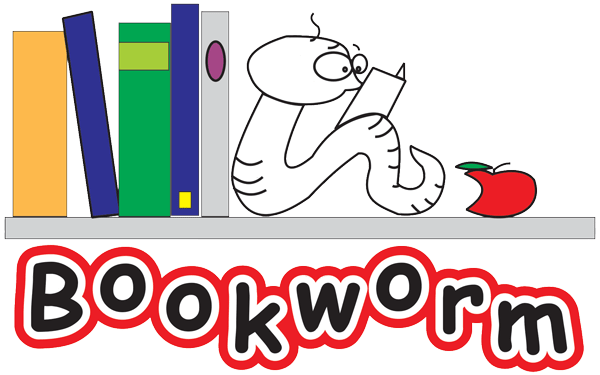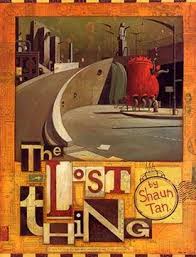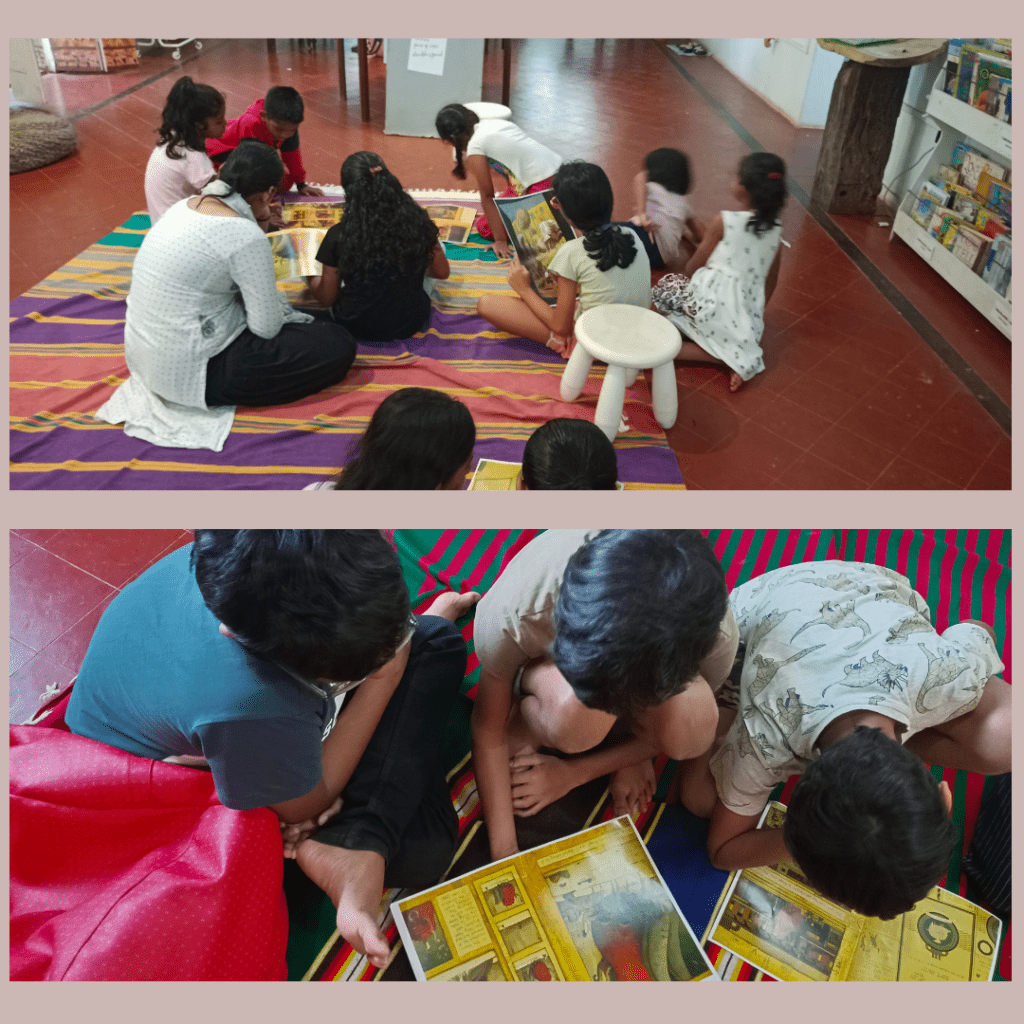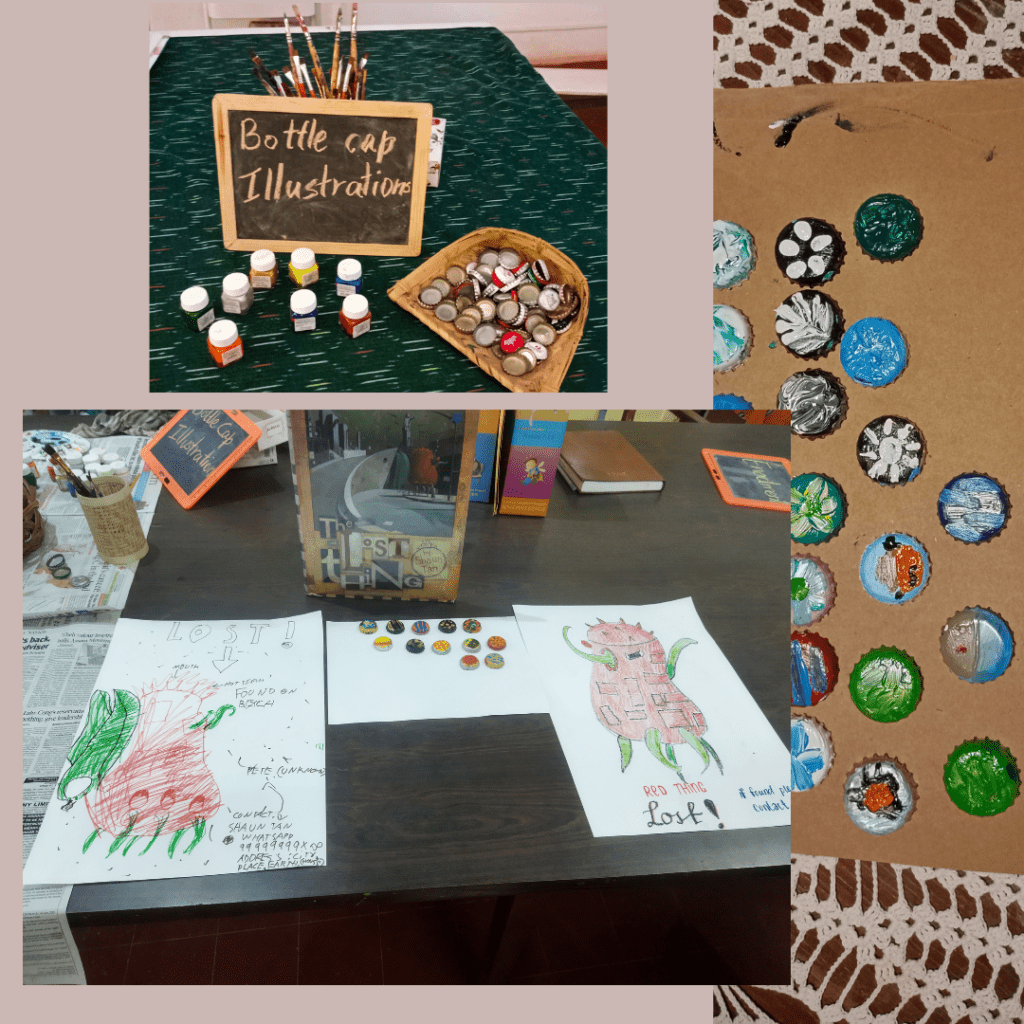Belonging is something we all as humans experience. Exploring this theme with children led me to surprising and insightful revelations. Recently, I facilitated sessions at Vinay & Jean Kalgutkar Community Centre, Saligao and Aldona Institute Library & Alban and Aurora Couto Community Library, Aldona. The session was titled ‘Story Exploration: The Lost Thing’, and together with the children I wanted to explore this question of what it means to belong. Their responses were both heartwarming and eye-opening. I had read this story by Shaun Tan, The Lost Thing, long back but it had touched me so much that I connected myself to the Lost Thing in the story. We as humans are always surrounded by many things, and especially other people, yet a feeling of belonging is missing somewhere. The story plot and illustrations are complex and yet touching. Each time I read it, I feel completely lost in the book, getting deeper into it.
To give a little background to the story, it is about a boy(author) who goes collecting bottle caps and discovers a very unusual thing on the beach. He guesses that the thing is lost and tries to help find the owner of The Lost Thing, where it belongs. But when he goes searching where The Lost Thing belonged, he finds that there is so much indifference, people hardly notice The Lost Thing.
It’s your story! Yes, It’s my story! Our story of belonging!
I chose this book to be opened out with our children at Bookworm Libraries in Saligao and Aldona as they come from diverse backgrounds and it would give me a good opening to discuss the idea of belonging.I also wanted to engage the older children by introducing them to this author and encouraging them to read in deeper ways, by implicitly drawing their attention to visual grammar of stories, and helping them make inferences. The session for this exploration was planned for children above ten years of age as the complexity of the story demands it.
Session preparation began with re-reading the story several times to get deeper into it, almost getting lost into the story. Preparing a plan from scratch for a complex story like this was something very new for me. Opening such a complex topic with the children seemed even more challenging. I approached our mentor Jennifer to help me out with the plan. She shared some very useful links and suggested possible ways to open this book. We worked on it and I felt super excited to open the theme of belonging through this plan.
So it was the day of the session, we began the session with a simple question, “What does belonging mean to you?” The children related belonging to ownership, like having a pencil or a book. However, as the discussion deepened, it became clear that belonging was more than just owning things. For example, Ashmika felt she didn’t belong in Goa because her family lived in a rented house, while Tanya initially felt she did not belong to the Saligao Library but grew to feel at home as she made friends and connected with the books and Library. Pratiksha felt that she doesn’t belong to the places where people speak in English as she doesn’t understand English too well.
We explored five questions on the theme of belonging. Below are the responses to them:
- Groups they were born in and continue to belong to: Children mentioned family, religion, and cousins, country, human.
- Groups they voluntarily belong to: They listed friends, dance, music classes, and the library.
- Groups they are excluded from: Teachers and people from different states or countries.
- When they Feel Included: Happiness, respect, and being listened to were a few responses.
- When they Feel Excluded: Ignored, lack of help, not heard, and rude behavior were noted.
We then explored the book. The cover of the book sparked a lot of curiosity and imagination, with observations about statues, factories, and even spaceships. The children were looking very carefully. Ashmika noted that a bottle cap on the silent page didn’t match the others, reflecting on the feeling of not belonging. Some others felt that everything on the cover was lost. Relating to the title, children started making connections with the illustrations on the cover and felt that the boy is lost, paper is lost, and the statue does not belong here. Azurro came closer to the book and said, “The Red object is lost, it looks very different, it has tentacles coming out from everywhere, and this is The Lost Thing I think.”
I read a few pages to give the start to the story, to get the children into the story, and the children later had the opportunity to read and interpret the pages themselves. For this, some of the pages were enlarged and given to them. This led to rich discussions among them and a deeper understanding of the narrative. They shared their thoughts about the story with all of us present. At Saligao, Afsheen and Tanya closely read the page they got and said that in the page the author is trying to find where the Lost Thing belongs to, he is going in the city to search for his family. Pratiksha asked “Why did the author’s family not want The Lost Thing at home? Helping is a good thing.” After the discussions, I read the last page to close the story. As soon as I stopped, Afsheen said first that she wants to take this book home, followed by others to request for the book. I then showed them other books by the author and most got issued for the day. While at Aldona, during the break time, they took the opportunity to read the book as they were curious to know what happens to The Lost Thing.
The session concluded with some creative activities based on the book. I had planned three different activities and the children were given a choice to choose any one extension they would want to do. Bottle cap illustrations using a style similar to the illustrations in the story; Making a poster to help The Lost Thing; or Enacting a conversation between Shaun Tan and The Lost Thing.
From the options given, the children made posters and illustrated bottle caps. Even Elena, who was initially quiet, created a beautiful poster, expressing her thoughts through art. She made a poster with the Lost Thing image and wrote ‘The Red Thing is lost, if found please contact’, while Azurro described The Lost Thing in his poster.
Through this entire experience I began to understand ways in which we could open out deeper ideas with children through books. It reminded me that the need to belong is something everyone feels, and it is important to create places where everyone feels valued and listened to. And I am happy that this space has been created in our libraries.



